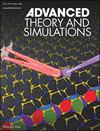Multi-Phase Field Model of Laser Powder Bed Fusion Based Additive Manufacturing of IN718 Superalloy
IF 2.9
4区 工程技术
Q1 MULTIDISCIPLINARY SCIENCES
引用次数: 0
Abstract
The present study investigates the microstructure evolution of IN718 alloy during multi (three)-layer Laser Powder Bed Fusion (LPBF) based additive manufacturing (AM), using multi-phase field (PF) modeling and experimental validation. The microstructure evolution of LPBF build has been studied via imposing fixed thermal gradient and cooling rate in case of first layer, and Rosenthal equation derived temperature field in successive layers (2nd and 3rd). The formation of dendritic gamma (γ) phase is significantly influenced by local cooling rates and temperature gradients, causing solute segregation and Nb-rich secondary phase formation in inter-dendritic regions. Simulation of successive layers show remelting of previous layers, affecting grain orientation, and secondary phase distribution, contributing to complex thermal history, wherein the final increase in secondary/ intermetallic phases (carbides, laves, and δ) are observed at the end of 3rd layer simulation. The developed PF model accurately predicts microstructural features of the LPBF build such as Primary (PDAS), Secondary Dendritic Arm Spacing (SDAS), and misorientation angle, validating its utility as a process control tool. Finally, EBSD analysis of the as-built sample depicts varying grain orientations, consistent with the directional solidification, wherein the presence of fine grains and uniform distribution of intermetallic phases enhances the mechanical performance.

激光粉末床熔融增材制造IN718高温合金的多相场模型
本研究利用多相场(PF)模型和实验验证研究了IN718合金在基于多(三)层激光粉末床熔融(LPBF)的增材制造(AM)过程中的微观组织演变。通过对第一层施加固定的热梯度和冷却速率,利用Rosenthal方程推导出连续两层(第二层和第三层)的温度场,研究了LPBF结构的微观结构演变。枝晶γ (γ)相的形成受局部冷却速率和温度梯度的显著影响,在枝晶间形成溶质偏析和富铌二次相。连续层的模拟表明,前一层的重熔影响了晶粒取向和二次相分布,导致了复杂的热历史,其中在第三层模拟结束时观察到二次/金属间相(碳化物、叶片和δ)的最终增加。开发的PF模型准确预测了LPBF构建的微观结构特征,如Primary (PDAS), Secondary Dendritic Arm Spacing (SDAS)和misorientation angle,验证了其作为过程控制工具的实用性。最后,通过EBSD分析,构建样品的晶粒取向发生了变化,与定向凝固过程相一致,晶粒细且均匀分布的金属间相增强了力学性能。
本文章由计算机程序翻译,如有差异,请以英文原文为准。
求助全文
约1分钟内获得全文
求助全文
来源期刊

Advanced Theory and Simulations
Multidisciplinary-Multidisciplinary
CiteScore
5.50
自引率
3.00%
发文量
221
期刊介绍:
Advanced Theory and Simulations is an interdisciplinary, international, English-language journal that publishes high-quality scientific results focusing on the development and application of theoretical methods, modeling and simulation approaches in all natural science and medicine areas, including:
materials, chemistry, condensed matter physics
engineering, energy
life science, biology, medicine
atmospheric/environmental science, climate science
planetary science, astronomy, cosmology
method development, numerical methods, statistics
 求助内容:
求助内容: 应助结果提醒方式:
应助结果提醒方式:


